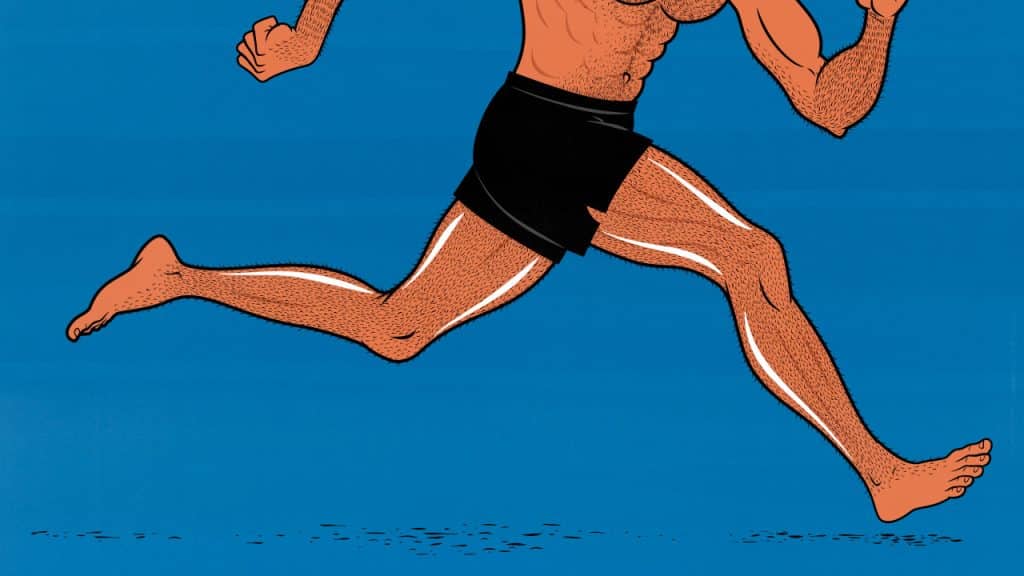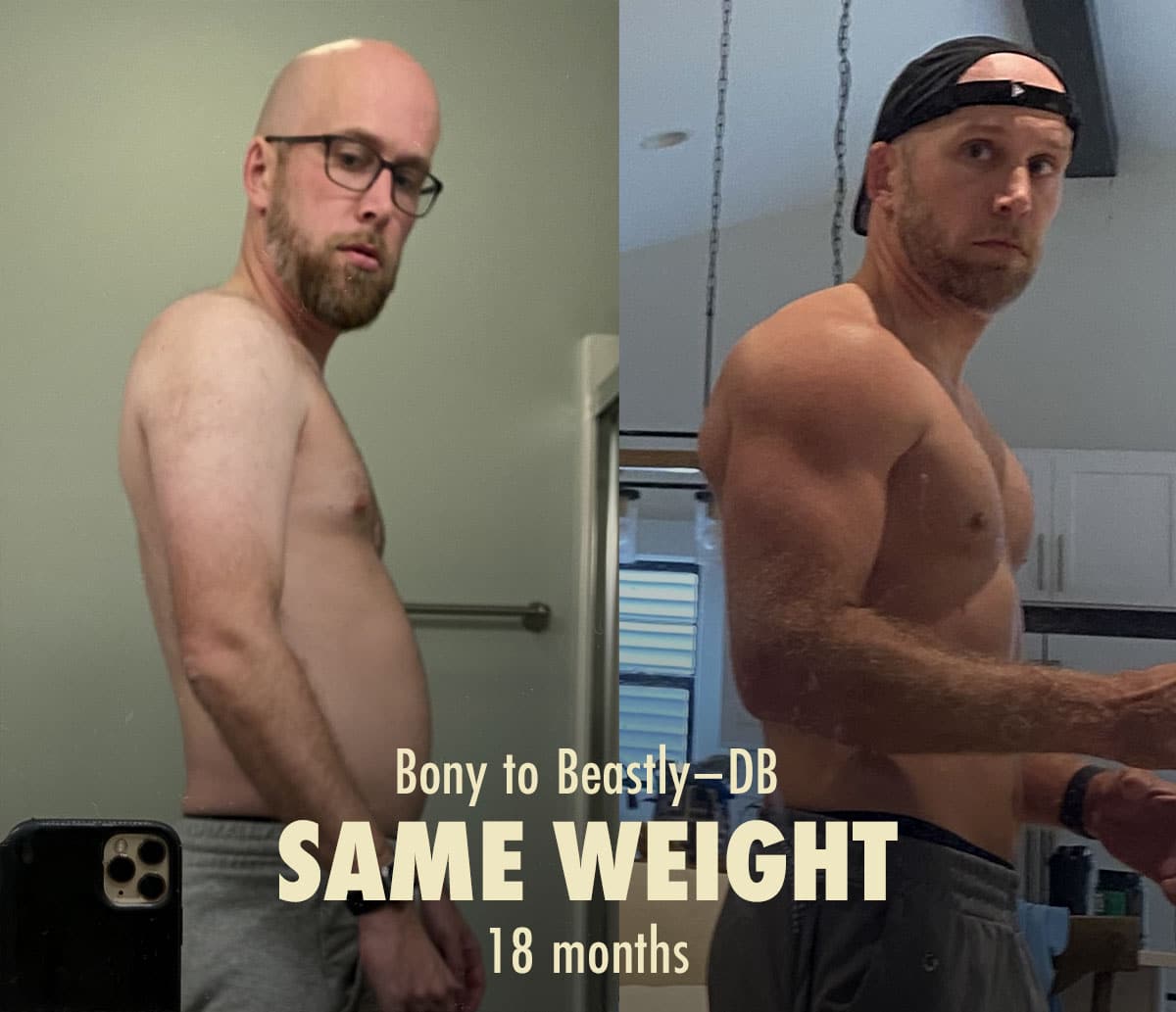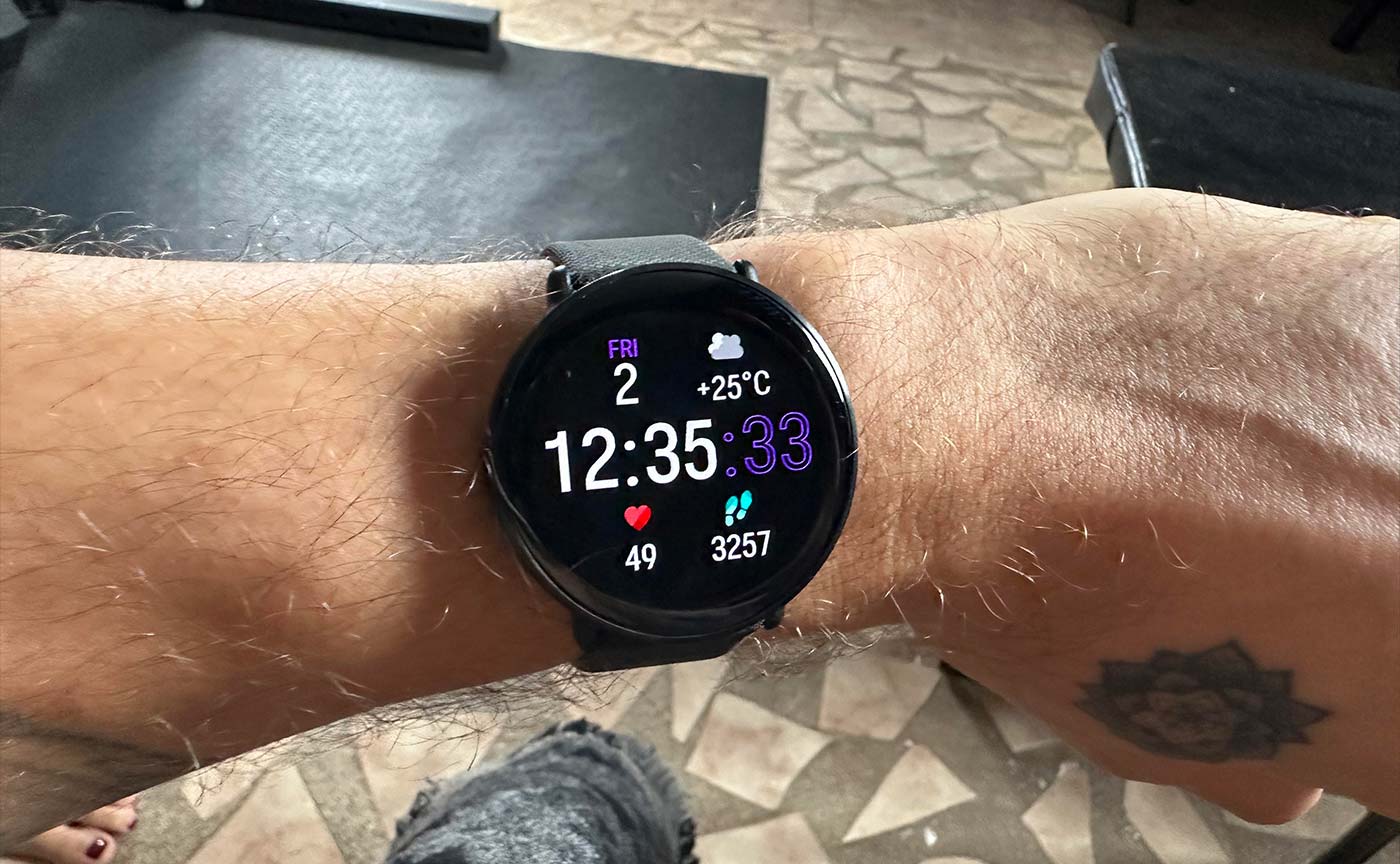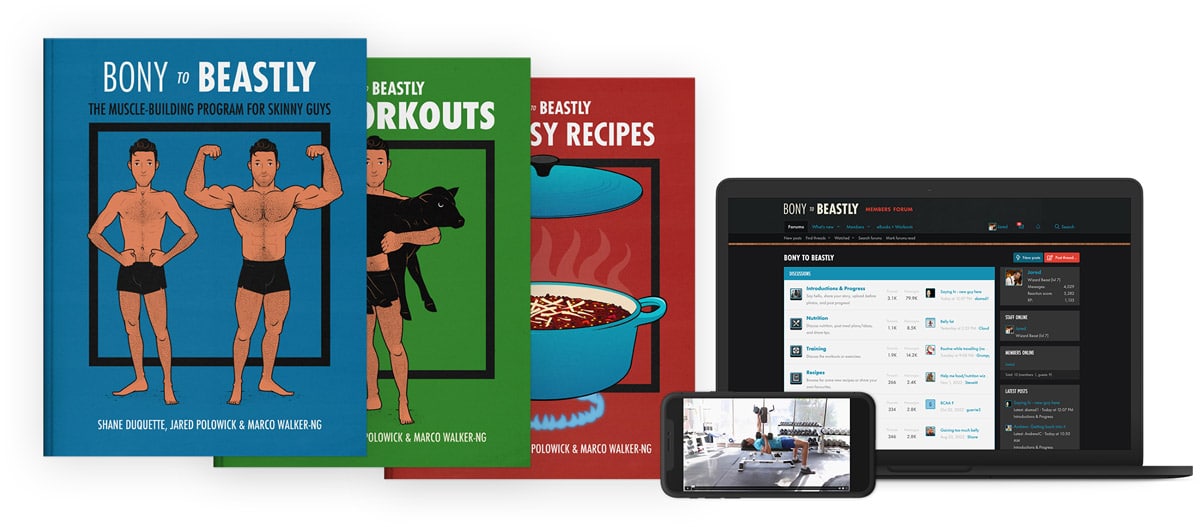
Does Cardio Kill Muscle Gains?
Cardio can kill muscle gains. We’ve known this for many decades. It’s common knowledge among lifters and shows up in studies. Most recently, a study found that cardio cut muscle growth in half. We’ll go over the nuance of that study in a moment.
That isn’t normal, though. Most people who combine weight training with cardio build muscle just fine. The latest meta-analysis found that cardio didn’t interfere with muscle growth at all (meta). In fact, I’ve noticed the opposite.
If you’re clever, you can use cardio to build more muscle. We’ll go over some interesting research. It’s something I’ve seen with clients, too. The guys who get the best results are often the ones who get fit while they’re bulking up.

The Problem With Doing Cardio After Lifting
Resistance training and cardio both stimulate different sorts of adaptations. Lifting helps build muscle, makes you stronger, and toughens your bones and tendons. Your cardiovascular health will improve a little, too, but not very much.
Cardio does the opposite. It helps build more blood vessels, improves lung capacity, and buffs up your heart. You’ll gain a little muscle and strength, but not much, especially when compared to lifting weights.
If you want to be big, strong, muscular, fit, athletic, and healthy, you need to do cardio and lift weights. You need both types of adaptations. That’s even true when you want to specialize. Bodybuilders benefit from being in great shape. Runners benefit from being strong. Training for both at once is called concurrent training. It’s the best way to train.

However, there’s a problem with concurrent training. One notable study found that doing 30 minutes of moderate-intensity cycling after an upper-body workout reduced upper-body muscle growth by about 50% when compared to participants who did their cardio the next day (study). Other studies have investigated all kinds of different combinations and schedules, with varying effects (meta-analysis, meta-analysis, meta-analysis).
Most research shows a benefit from staggering the stimulus, separating your cardio and lifting workouts by at least a few hours (study). For example, you could do cardio in the morning and lifting after work. Or you could lift one day and do cardio the next. That seems to remove all possible downside, provided you aren’t training so long and hard that you can’t recover from all of it.
The Benefits of Getting In Shape
When you do cardio, you build more blood vessels, improve blood flow, and improve nutrient delivery all through your body, including to your muscles. When you get into good cardiovascular shape, you’ll be better at lifting weights, you’ll regain your strength faster between sets, and you’ll recover more quickly between workouts. All of this is great for building muscle.
In a study by Thomas and colleagues, they found that doing cardio improved capillarization in the muscles being worked, potentially improving future muscle growth in those muscles (study). It’s still too early to know the full implications, but since the side effects of cardio are so incredibly healthy, you may as well take advantage of the possible muscle-building benefits.

Frequently Asked Questions
What If You Need to Lift and Do Cardio in the Same Workout?
The best way to improve your health is to do resistance training and cardio. If you don’t have time to separate them, it’s okay to do them together. There are other ways to reduce or even completely eliminate the interference effect.
If you have to lift and do cardio in the same workout, and if your main goal is to build muscle, then a study by Eddens and colleagues suggests that it’s better to lift first and do cardio second (study). That way, your best effort is going towards your main goal.
You can also keep the cardio more moderate. Maybe you limit it to 20–30 minutes. That way your body isn’t struggling to recover from too much all at once.
Is It Okay to Do Cardio to Warm Up or Cool Down?
You can hop on a treadmill or stationary bike to warm up or cool down. That’s totally fine. If the cardio is energizing or relaxing, it’s not challenging enough to interfere with muscle growth (study, study). Just keep it relatively easy and brief. If your main goal for that workout is to stimulate muscle growth, save your best energy for lifting weights.
Should Skinny Guys Avoid Cardio?
I’m a naturally skinny guy. This fear haunted me for many years. The worry is that cardio burns calories, making it more difficult to get into a calorie surplus. That’s true, but cardio doesn’t burn that many calories. Plus, it can speed up digestion and increase appetite, both of which make it easier to eat enough calories.
If you’re just starting to lift, it’s better to focus on one new habit at a time. Once that habit hardens, feel free to add some cardio. When you do, ease into it. Start small and work your way up.
If you already do cardio and you’re considering adding lifting into your routine, you may want to cut back on the cardio, but only if it interferes with your lifting. If you can manage both, more power to you. That’s the dream.
What Type of Cardio Pairs Best With Weight Training?
All types of cardio can pair well with lifting, provided you keep your workouts separated and don’t overdo it. High-Intensity Interval Training (HIIT) is a good choice (study, study), but it’s already somewhat similar to lifting. You work your muscles hard, rest, and then do it again.
I’m of the opinion that steady-state cardio pairs better with lifting. It’s more distinct from lifting, giving you a more well-rounded fitness routine. I think going on brisk walks makes for the best place to start. When that becomes easy, you could up the ante by swapping out 2–3 of those walks for 20-minute jogs, rucks, or bike rides.
Does Running Make You Lose Muscle?
Running won’t make you lose muscle. In fact, running helps to preserve muscle when you’re in a calorie deficit (study, study). It’s not nearly as good as lifting weights, but it helps quite a lot. Even if you’re doing your cardio and lifting in the same workout, the interference effect won’t cause muscle loss, it just slows growth. You’ll still make progress, just more slowly.
My Experience Combining Lifting and Cardio
I was sedentary for the first 20 years of my life. When I first started lifting weights, it hit me like a truck. I gained 20 pounds in 3 months, which was incredible, but I also found it incredibly fatiguing. I also found it difficult to keep up with all the new habits. Adding cardio to my lifting routine felt like it would be too much, so I didn’t.
When I finished that first bulk, I started adding more brisk walking into my lifestyle, trying to meet the minimum guidelines for cardiovascular exercise. That went very smoothly, especially since I’d already adapted to the stress of lifting weights. From there, I gradually gained another 40–50 pounds of muscle, doing easy cardio alongside my hypertrophy training.
A year ago, I started taking cardio more seriously. Instead of going on walks, I started jogging for 4–5km, then walking home, taking me about an hour overall. I found myself feeling pretty tired. I wanted to skip or ease back on my weight-training workouts. I didn’t have as much energy for them. If I had been trying to bulk up, this would have been a problem. Fortunately, I was only trying to maintain my gains.

After about 6 months of adapting to my new cardio routine, it isn’t nearly so fatiguing anymore. My resting heart rate has dropped 10 bpm (into the high forties), and my VO2 max has gone up 5 points (to 49), both of which show that I’m in far better shape. I can feel it, too. I have more energy. It’s easy to lift and do cardio.
This seems to be fairly common. Most people I know eventually managed to work both weight training and cardio into their lifestyles. Most struggled with it at first. Few of them succeed at adding both types of training into their lives at the same time.
Summary
If you’re new to lifting weights, build those habits first. When you’re ready for more, I recommend keeping your cardio fairly easy. Go out on 20-minute walks. It’s fine to go on those walks right before or after lifting weights—as long as they don’t interfere with your lifting performance.
As you get stronger, tougher, and fitter, you can increase the duration and intensity of your cardio. When you do that, it might pay to keep those intense cardio workouts separate from your lifting workouts. A few hours of separation seems to be enough.
If you want a deeper dive into how and why to combine cardio with your lifting routine, I wrote a full article on Outlift.

Alright, that’s it for now. If you want to know the ins and outs of bulking up, we have a free newsletter. If you want a full muscle-building program, including a 5-month workout routine, a bulking diet guide, a gain-easy recipe book, and online coaching, check out our Bony to Beastly Bulking Program. Or, if you want a customizable intermediate bulking program, check out our Outlift Program.

